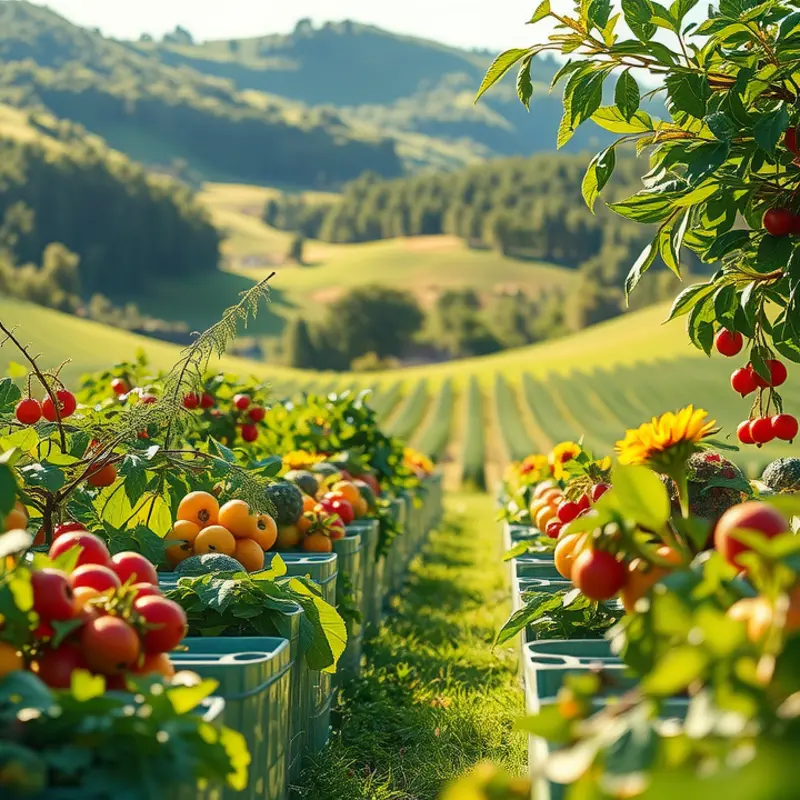As the world grapples with pressing environmental issues, the search for sustainable food sources becomes paramount. Pulses and legumes, often overlooked, are emerging as vital components in the quest for eco-friendly diets. Packed with nutrients and rich in sustainability benefits, these foods represent a valuable ally for anyone on a mission to reduce their ecological footprint. Their cultivation is not only beneficial for health; it plays a significant role in preserving our planet for future generations.
The Nutrient-Rich Powerhouses for a Greener Plate

Pulses and legumes, such as lentils, beans, and chickpeas, are nutritional dynamos that have gained global prominence for their role in sustainable diets. Their rich nutrient profile makes them indispensable in various cuisines around the world. These plant-based foods are packed with protein, dietary fiber, and essential nutrients, making them an excellent alternative to animal proteins.
Protein is a critical component of any diet, and pulses and legumes deliver it abundantly, often containing twice as much protein as wheat and three times as much as rice. This makes them particularly appealing to vegetarians and vegans who need to meet their protein requirements without consuming animal products. Additionally, the complex carbohydrates found in these foods provide a slow, steady release of energy, keeping hunger in check for longer periods.
The fiber content in pulses and legumes contributes significantly to digestive health. Soluble fiber helps in lowering blood cholesterol levels, while insoluble fiber aids in digestion and regularizes bowel movement. Such properties make them an excellent choice for maintaining a healthy gut and mitigating the risks associated with chronic diseases such as diabetes and heart conditions.
Beyond protein and fiber, pulses and legumes are rich in several essential nutrients, including iron, potassium, and folate. Iron found in these foods is crucial for forming hemoglobin and transporting oxygen throughout the body. Potassium helps in regulating blood pressure, while folate plays a vital role in producing DNA and other genetic material. Furthermore, these foods are naturally low in fat, containing no cholesterol, which aligns perfectly with health-conscious and heart-healthy diets.
From a sustainability perspective, pulses and legumes are remarkably efficient to produce. They require significantly fewer resources, especially water, compared to animal-based protein sources. For instance, growing a kilogram of lentils requires only around 50 gallons of water, whereas the same weight of beef may require up to 15,000 gallons. This water efficiency makes them a key crop in efforts to conserve water and reduce agriculture’s environmental footprint.
In addition to their frugality in water usage, pulses and legumes enhance soil health. They have the unique ability to fix nitrogen from the atmosphere, thanks to their symbiotic relationship with rhizobia bacteria in their root nodules. This natural fertilization process enriches soil fertility, lessening the need for synthetic fertilizers and improving biodiversity. Crop rotations involving pulses and legumes can increase yields of subsequent crops by preparing and enriching the soil while also attracting beneficial microorganisms.
The transformative impact of pulses and legumes stretches beyond individual health benefits to influencing agricultural and ecological systems positively. Their incorporation into diets across the globe showcases a blend of nutritional prowess and environmental stewardship, proving that what we eat can have powerful effects beyond our plates. Embracing these eco-friendly superstars is a step towards a sustainable future.
For delicious recipes that incorporate pulses and legumes into your meals, try exploring a Mediterranean Chickpea Salad for a burst of freshness and flavor.
Pulses: The Environmental Champions

Pulses and legumes, often hailed as humble pantry staples, stand as champions in the realm of environmental sustainability. Their ability to naturally enhance soil health positions them as a vital cog in sustainable agriculture. These crops possess a unique symbiotic relationship with soil microorganisms, particularly the Rhizobium bacteria. This collaboration allows pulses to partake in an impressive process known as nitrogen fixation.
Nitrogen is a vital nutrient for plant growth, traditionally supplied through chemical fertilizers. However, the production and excess use of these fertilizers come with significant environmental costs. Pulses reduce this dependency by converting atmospheric nitrogen into a form that plants can use. This natural enrichment of the soil not only boosts fertility but also diminishes the need for synthetic fertilizers, lowering the ecological footprint of agriculture.
Beyond the soil, pulses contribute to sustainability through their influence on greenhouse gas emissions. Agricultural practices are notable contributors to global emissions, but pulses help mitigate this. Their lower reliance on fertilizers directly influences the emission levels, as fertilizer production and application are greenhouse gas intensive. Pulses deliver substantial benefits by providing nutrients to the soil with reduced environmental impact.
Water conservation is another critical aspect where pulses excel. They are notorious for their resilience and ability to thrive in arid and semi-arid conditions. This adaptability means that pulses require less water compared to other crops, such as rice or wheat. In a world where water scarcity looms large, incorporating water-efficient crops like pulses into agricultural rotations promises both economic and environmental gains.
Incorporating pulses into diverse farming systems also enhances biodiversity, promoting an ecological balance. Their presence in crop rotations can break pest and disease cycles, leading to healthier crops without excessive pesticide use. This natural pest regulation further cuts down on chemical input costs and environmental residues.
For those keen on aligning their dietary choices with environmental consciousness, pulses offer myriad benefits. Incorporating delicious and plant-based meals with pulses like chickpeas can be both satisfying and sustainable. You can explore flavorful options with a Mediterranean Chickpea Salad that combines taste with eco-friendly eating.
Adopting pulses in mainstream agriculture and daily diets translates into a direct positive impact on the planet. With the many environmental advantages they present, pulses and legumes hold the key to reshaping food systems for the betterment of our ecosystem. Their journey, rooted in soil health and extending to global climate goals, makes pulses indispensable in the quest for sustainability.
Final words
Incorporating pulses and legumes into our diets is not just a personal health choice; it also represents a powerful step toward environmental sustainability. Their ability to enhance soil fertility while requiring fewer resources positions them as crucial players in combating climate change. By embracing these foods, we are making an active choice to support a healthier planet and ensure food security for future generations. Let’s fill our plates with the goodness of pulses and legumes, contributing to a sustainable food system that celebrates the beauty of nature.








